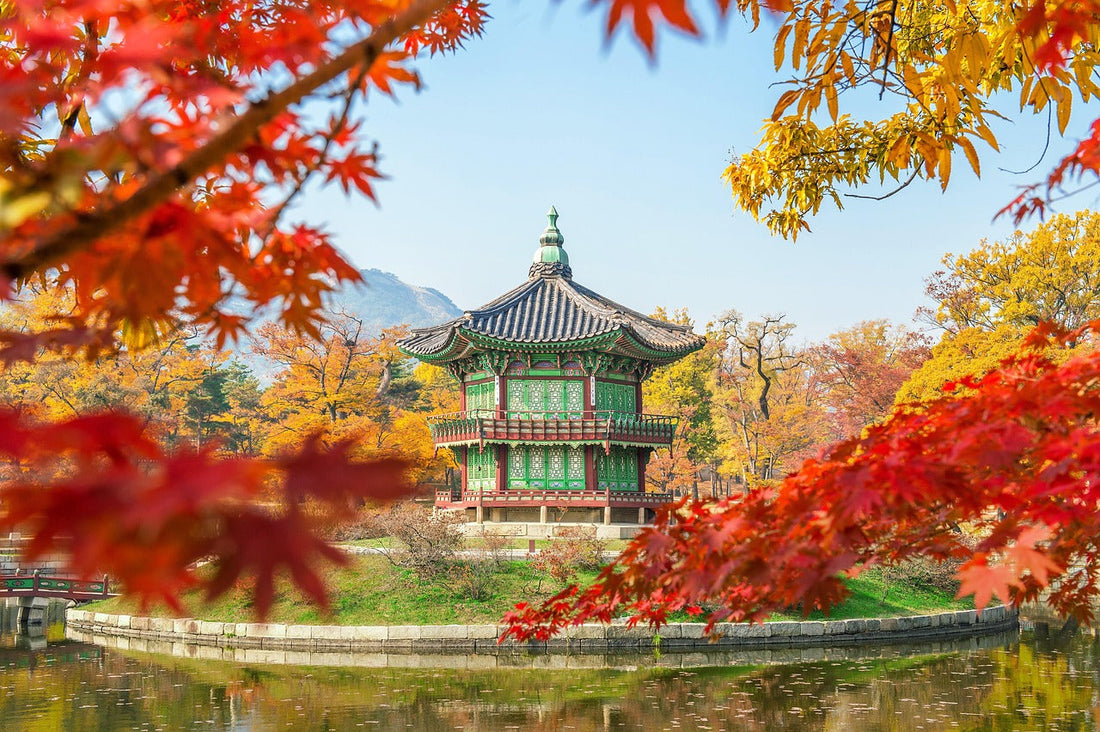
Korean ancestral rituals in kbeauty
Share
Kbeauty has established itself as a global benchmark in skincare, thanks to its gentle, innovative, and holistic approach. Yet, behind the modern formulas and sophisticated packaging, Korean cosmetics draws its roots from centuries-old traditions. Ancient beauty rituals, passed down from generation to generation, are now resurfacing in a reimagined version adapted to the needs of contemporary skin.
This article takes you on a journey of discovery through these ancient practices that inspire current trends: from the use of medicinal plants ( hanbang ) to facial massages, steam baths and the importance of a balanced diet.
The ancestral foundations of Korean beauty
Long before the advent of modern kbeauty, beauty in Korea was based on simple principles: balance, harmony, and respect for the skin's natural cycle. Confucian philosophy and traditional Korean medicine (inspired by hanbang ) shaped a vision where outer beauty reflects inner health.
Among the rituals transmitted:
- The use of medicinal plants (ginseng, licorice, peony, green tea ).
- Fermented treatments , considered to be more easily assimilated by the skin.
- Manual massages to stimulate circulation and maintain firmness.
- The central role of cleanliness and purification through cleaning.
Today, these ancestral practices are not disappearing. On the contrary, they are resurfacing in modern formulations and attracting an international clientele in search of naturalness and authenticity.
Hanbang : When traditional medicine inspires modern kbeauty
Hanbang is one of the pillars of ancestral Korean cosmetics. This approach relies on the use of medicinal plants, often in decoctions or fermentations, to maintain the skin's balance and strengthen its natural defenses.
The key hanbang ingredients:
- Red ginseng : known for its energizing and anti-aging properties.
- Licorice : Used to lighten the complexion and soothe inflammation.
- Camellia : rich in essential fatty acids, to nourish and protect.
- Green tea : a powerful antioxidant recognized in kbeauty and which fights against premature aging.
- Fermented extracts : promote better absorption and strengthen the skin barrier.
Example in modern cosmetics:
The Beauty of Joseon brand is emblematic of this return to roots. Inspired by the routines of women during the Joseon Dynasty, it combines hanbang ingredients with modern science.
- Beauty of Joseon Calming Serum Green Tea + Panthenol Soothing → a serum that combines green tea and panthenol to soothe and protect.
- Beauty of Joseon Matte Sun Stick Mugwort + Camellia SPF50+/PA++++ → a practical sun stick that combines modern protection with the traditional virtues of mugwort and camellia.
These products demonstrate how kbeauty successfully combines medicinal traditions with scientific innovations.
Steam baths to purify the skin
An ancient ritual involved using hot steam, often infused with medicinal herbs, to cleanse and open pores. This steam bath, called jjimjilbang in its modern version (Korean sauna), not only purified the skin but also promoted relaxation.
Today, this ritual can be found in:
- Korean spas where steam is combined with exfoliating treatments.
- Home treatments , where steam precedes a mask or gentle exfoliation.
In modern kbeauty, the idea of gentle purification translates into gentle foaming cleansers and enzymatic exfoliants, which replace steam while preserving the concept of pure, receptive skin.
Double cleansing: a ritualized heritage
Contrary to popular belief, double cleansing isn't a recent kbeauty invention. Korean women during the Joseon era were already using natural oils followed by cleansing powders made from rice or ground beans.
Today, this ritual has been modernized with:
- Makeup remover oils that dissolve makeup and fat-soluble impurities.
- Gentle aqueous cleansers that complete the job without harming the skin.
👉 This ancestral principle of purity as the basis of beauty continues to be an essential pillar of modern kbeauty.
Masks: legacy of ancient rituals
For centuries, Korean women have used natural preparations applied as masks to beautify their skin: rice flour for radiance, honey for hydration, and plant extracts to soothe.
Today, this tradition continues through:
- Fabric masks , which have become a global icon.
- Sleeping masks that deeply moisturize.
- Targeted treatments inspired by ancestral recipes, but reformulated with modern active ingredients.
Facial massage: preserving youth and balance
Facial massages were a daily practice to stimulate blood circulation, maintain elasticity, and promote a luminous complexion.
Today, this tradition is revisited with:
- Modern tools like gua sha or jade rollers .
- Massage techniques inspired by acupressure.
- Incorporating into daily routines to enhance the effects of serums and creams.
Beauty linked to food
In Korean tradition, beauty begins on the plate. The diet emphasized fermented vegetables ( kimchi ), herbal teas, and a diet rich in nutrients and low in saturated fat.
Modern kbeauty takes up this principle with “nutritional” cosmetics for the skin, rich in:
- Probiotics to balance skin flora.
- Vitamin C to even out skin tone.
- Amino acids and peptides to strengthen the skin.
Why is this return to rituals so appealing today?
There are three main reasons for this renewed interest:
- Authenticity : Consumers look for products with a story and heritage.
- Naturalness : Traditional ingredients are perceived as gentler and safer.
- Proven effectiveness : These rituals have stood the test of time and are now validated by modern scientific studies.
To finish
The return of ancestral Korean rituals in modern cosmetics perfectly illustrates the power of kbeauty: a balance between heritage and innovation . The practices of yesteryear—using hanbang , steam baths, double cleansing, masks, and massages—are not relics of the past, but perpetual sources of inspiration.
Korean brands like Beauty of Joseon and Isntree are reinterpreting these traditions with a modern, scientific, and accessible dimension. The result: skincare products that respect the essence of ancient rituals while meeting the needs of contemporary skin.
👉 You can find the entire world of kbeauty on beautylau.fr And if you're unsure about the routine best suited to your skin, our skincare quiz is here to guide you.
